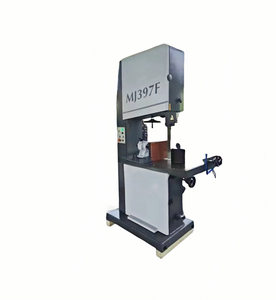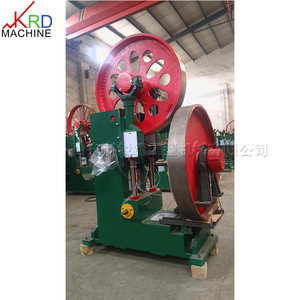(1424 products available)
















































































































































































































The band saw 70 is one of the most popular wood cutting machines. It cuts wood by using a long blade in a loop. There are many types of band saws, each of which is suitable for specific applications.
The specifications of a saw help buyers know its blade length and width and cutting capacity. This information is crucial when they want to use the saw for specific applications.
It is imperative to maintain the band saw with machine parts to ensure it works optimally for many years. When well maintained, the machine parts rarely need replacement, saving businesses a lot of money.
Commercial metal fabricators use heavy-duty band saws to make large, heavy-duty cuts. They use them to create, for instance, structural beams, frames, and industrial parts and to cut through thick sheets of metal piping and solid stock.
Operators of saws with great cutting capacities typically make straight cuts. The saw is most suitable for this kind of operation because it has a speed that is optimally set for cutting through metal. Making miter cuts is possible but will require that the machine has the feature that allows it to do so, and the operator must be trained to know how to make such a cut with a band saw. Miter cuts are angled cuts that are usually cut on joints. They require a saw with an appropriate cutter with teeth designed for making jointing miter cuts.
A benchtop or smaller band saw cut wood. Band saws that can miter are usually preset to do so for an operator's convenience. The machine will have the angle on which it is to cut, and the setting will have the blade in the position it should be on to make the cut perfectly. There are various band saw cut miter angles, but the most popular and common ones are 45 degrees and 90 degrees. To make miter cuts with a band saw, an operator of the band saw will have to use a clamp to cut irregular shapes, a stop block to make repeatable cuts, and a fence to make straight cuts in his setups. The cut is much better than the cutoff produced by a band saw with average cutting speed.
Selecting the right band saw is a crucial step for business buyers. They need to think carefully about applications, materials, cutting capacity, features, and safety requirements before they make a choice.
Applications and Materials:
Business buyers need to first think about what they will be cutting most often. This includes looking at the type and thickness of the materials. They should choose a saw with the right blade and features for their specific job. For example, woodworking projects require different saws than ones used for metalwork.
Cutting Capacity:
When choosing a band saw, buyers need to consider the dimensions they need. This includes the maximum width and height of the cut, also known as resaw capacity. Buyers should pick a band saw whose cutting capacity matches the biggest size of the workpiece they plan to use. If not, the saw may be limited or become a problem later on.
Saw Specifications and Features:
Business buyers should select a band saw that has the essential specs and features for their needs while ignoring unnecessary extras. They need to look for important things like blade size options, speed settings, and cutting accuracy. If they have work requirements, they may need to choose a band saw with certain functions, such as having a digital display for precise cutting controls.
Durability and Build Quality:
Choose a saw that is suitable for the job. For example, woodworking should purchase one made with wood as the main material because it is less heavy than others. Consider factors like weight and whether it is stationary or portable.
Dependable and Easily Obtain Replacement Parts:
Frequent use of a band saw may mean it breaks more often. This is important when looking at repair options. Choose a model that has readily available replacement parts.
Q1: What are some cutting techniques one can use with a band saw?
A1: Band saws are versatile; thus, allowing users to get creative with different cutting techniques. One common method is making straight cuts by following a marked line on the material without using any template. Another technique is curves and detailed work, which entails slowly turning the piece while cutting it to shape unique curves or contoured profiles. There is also the resawing technique used mainly for band saws with larger blades; this method involves cutting through thick pieces of wood or other materials horizontally to produce thinner stocks like sheets or boards.
Q2: Can one buy used band saws?
A2: Yes, used band saws can be bought Use band saws for sale are in good condition and can perform tasks like cutting materials efficiently. Before purchasing, it is always a good idea to know the history and condition of the machine.
Q3: How can someone improve their safety when using a band saw?
A3: A person's safety while using a bandsaw can be improved in various ways, including but not limited to always wearing safety glasses to protect oneself from flying debris or dust generated during the cutting process. Another tip is to ensure proper blade tension and tracking, which helps reduce the risk of accidents such as blade breaks or unexpected jump-off incidents. One can also use push sticks and stop blocks whenever possible, as these tools provide better control over smaller pieces while keeping fingers away from dangerous areas near the blade.